1.0. An Eye-Witness Account Contemplating One of The Top Events of the 20th Century
The evening of Sunday, February 11, 1990 will remain forever etched in my memory. I remember vividly the cheerful cacophony of the overflow crowd on

Danforth Avenue in Toronto- past the Bread and Roses credit union; past

Big Carrot coop grocery; just outside
.jpg)
Asteria,the Greek restaurant next to the health food store downstairs from the offices of the African National Congress which were themselves adjacent to the current headquarters of the Communist Party
this wide, wide nation-state called Canada.
What a mish-mash of joyful humanity! Greek Canadians danced a jig with their Trinidadian counterparts; Africans from all over the continent mingled with Maple Leaf-South Asian components of the wider Desh diaspora; Europeans of all hues and accents mixed it up with Latinos, Chinese, Korean and other South East Asian people; Indigenous activists pounded their drums even as a convoy of youth shrieked their progressive gibberish while a sprinkling of graying activists released balloon after balloon into tumult filled southern Ontario skies.
Uniting this emotion-soaked cornucopia of rejuvenated humanity was a stately, statuesque grand-father tens of thousands of miles away, across an expanse of Atlantic

 in a city ensconced at the tip of the continent which hosts the Cape of Good Hope.
in a city ensconced at the tip of the continent which hosts the Cape of Good Hope.Earlier that day, we had all been glued to our television sets. When Nelson Mandela emerged from prison,


triumphant fist raised in victorious salute with Winnie Mandela at his side, I openly wept-along with billions of people around the world. The world’s most famous political prisoner had suddenly been transformed into the most recognizable ex-convict throughout the world.










Twenty seven years!
Twenty seven long years behind bars-a good chunk of it consumed by the punishing milieu of






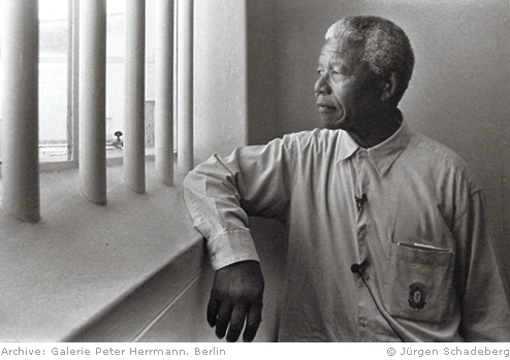



Robben Island along with the

Kathradas,


Sisulus,

Govan Mbekis,
Mafumadis, Goldbergs and

Alexanders.
Twenty seven long years of an unbroken spirit soldiering on, refusing to be cowed, refusing to sell out, refusing to die, refusing to compromise.
I have had the rare fortune of being in the same room with Nelson Mandela on four separate occasions.
First it was the year that he came to Canada and I was among members of the anti-apartheid movement in Toronto who saw him briefly when he came to address us at the Westin Harbour Castle hotel; then in September 1998 at the Sky Dome



I remember how the room suddenly glowed with electricity and magnetism when Nelson Mandela, accompanied by his third


wife Graca Machel joined the members of the Canadian Friends of the Nelson Mandela Children’s Fund(of which I was a member) for a group photograph. Grown men and women melted and almost collapsed LITERALLY at the charismatic presence of Madiba. I have never seen anyone anywhere(and I have met Jesse Jackson, Cheddi Jagan, Walter Sisulu, Angela Davis and other celebrities) have the kind of lasting effect in a hall filled with strangers. The third time I came face to face with Mandela was later the same day at the reception at the Royal York put on by the Canadian government. I was shocked when he took my outstretched hand- I had half expected his burly security detail to wrestle me down to ground as a potential assassin- his hand shake is very, very gentle and that famous smile is actually genuine, you see it start at those kindly, sparkling eyes and suffuse your entire being… The fourth time was the other day when he showed up at


Ryerson University to get a honorary doctorate degree.
Nelson Mandela, in terms of physique, history, political commitment and visionary leadership towers above any other figure in the second half of the 20th Century. Even today, almost six years after he respected his pledge to step down after serving his single presidential term, he remains the most respected statesman in the world, feared by the world’s most powerful man- George Bush.
Nelson Mandela has made Africa and Africans respected and dignified in a world that dehumanizes our people, holding us in deep contempt and marginalizing us from development and the latest advances in technology.
Nelson Mandela is also 50%











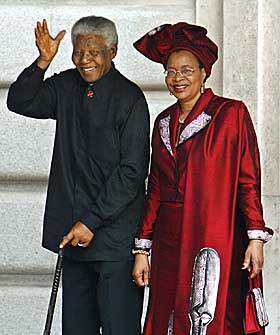



of one of the planet’s hottest romantic couples. When Graca Machel

agreed to marry him on his 80th birthday, he sent a powerful message for late blooming relationships that dwarfs the most manipulative ad from Viagra.
Nelson Mandela's relationships with women has been the subject of debates, newspaper articles and even television documentaries. The man knows how to compose a love letter or two and was not exactly tongue-tied when it came to weighing in on the infamous split with the other famous Mandela-Winnie and the difficulties of being the father of his own kids when he was expected to be the father of the South African nation.



The other day, when I was reading Madiba's exhortation to the G-7 to cancel the Third World's debts, I fretted, anxious and sad, fearing that the inevitable full-stop to a multi-volumed biography was about to be added at the conclusion of a very long saga.
2.0. A Gallery of Amazing Senior Citizens of the World
Another greying colossus is




Fidel Castro, inching towards his octogenarian decade after surviving Eisenhower, Kennedy, Johnson, Nixon, Ford, Carter, Reagan, the senior Bush, the first Clinton, the second Mr Hilary, the first Dubya and standing stronger as Bush Junior launches his second term.
From the storied court room oratory and eloquence of La historia me absolverá during that historic 1953 trial to the almost five decades of surviving a gazillion death plots while defending the Cuban Revolution,Fidel Castro has become a poster child for socialist optimism, courage, principles and perserverence.
Even though it is thirty-six years since he breathed his last, many of us still fondly remember the legacy of Uncle Ho, also known as Nguyen Ai Quoc or better yet as


Ho Chi Minh.
And it was sad to hear of



Arthur Miller's death a few days ago.
Five or six years ago, we all saw the amazing phenomenon of Cuban musicians like


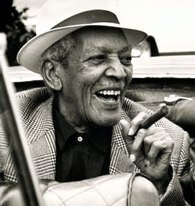

Compay Segundo,

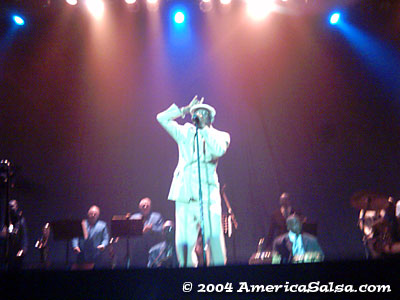



Ibrahim Ferrer



Omara Portuondo

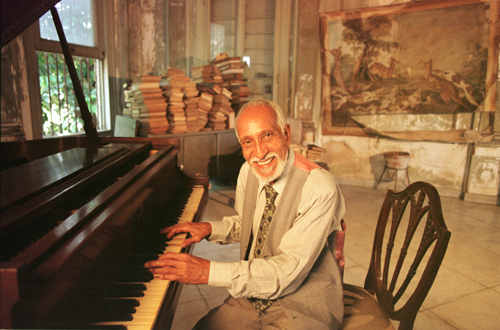
Ruben Gonzalez and other members of the Buena Vista Social Club becoming global megastars in their nineties, eighties and seventies....






Nawal el Saadawi, the Egyptian physician, novelist, feminist and all round social justice activist has been part of the mainstay of many African, Arab, Middle Eastern and women’s movements. Her novels are critically very well regarded for their powerful portrayal of strong women.
When she passed on in 1996 at the age of 78,






Ella Fitzgerald left behind an unsurpassed record, spanning five decades of stellar contributions to jazz and other forms of contemporary music.
I did not have to see


the 65 year old Tina Turner appear on Oprah! The other day, plugging her latest CD, All The Best to know that that the Europe-based Buddhist chanteuse can still turn heads.
How many of us know the story of the doyenne of the Spanish Communist movement,
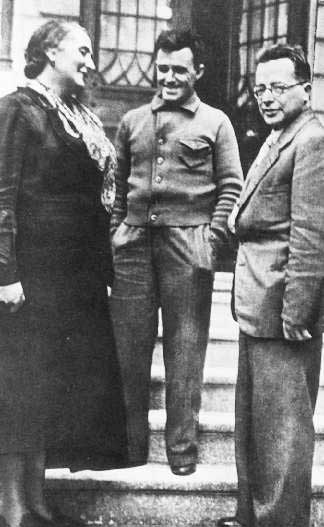





Dolores Ibárruri "La Pasionara" who is credited with coining the phrase, “It is Better to Die on Your Feet Rather Live on Your Knees”? and uttering the famous cry,





"No Pasaran!"
By the way, can you guess the age of the fine lady in the picture below?

Try ONE HUNDRED AND FOUR YEARS OLD!!
3.0. Ageism 101
Cutting to the chase, here is the skinny on

ageism. This is just ONE of a myriad perspectives on this complex subject, so please rummage around on your own for more 411. Ageism is one more "ism: that must be eradicated if we are really serious about living in a more equitable world. I have some shocking news for all of the goofs who cannot stand Fidel Castro and pray daily that the Cuban President falls dead. Actually it is not even Oloo who has the news, but the right wing London newspaper the Daily Telegraph:
Castro may live to be 120, says his doctor
By Isambard Wilkinson in Madrid
(Filed: 12/02/2005)
Opponents of Fidel Castro's regime who are still waiting for the Maximum Leader's death are in for some bad news: his doctor has said he may live to the age of 120.
Eugenio Selman-Housein, the senior doctor in charge of President Castro's medical team, dismissed recent concerns for the 78-year-old Cuban leader's health.
He said: "Fidel fulfils all the necessary requirements in that he eats well and walks four kilometres five days a week, even after the operation on his knee. He could perfectly well live until 120 years old.
"The whole world could satisfactorily live 120 years," said Dr Selman, President Castro's personal physician, at a seminar for nutritionists, psychologists, gerontologists on the secret of Cuban centenarians' longevity.
According to Dr Selman, to live a long life an individual must meet six basic conditions: motivation to live, appropriate diet, medical attention, intense physical activity, cultural activities and a healthy environment.
The Cuban leader was forced to urge his people to stay calm over the state of his health last October after he tripped over a step and broke a knee and an arm.
He is clearly taking the health issue to heart as earlier this week the land of the cigars banned smoking in public.
That's right, you right-wing nutbars!
For a clue, find out what the 120 Years Club is all about.
4.0. Women in a Youth Obsessed Sexist Culture
When is the last time you saw

Whoopi Goldberg in a brand new movie?
How many network news anchors are women? How many of those women are over fifty? How many network news anchors are men? How many of those men are below fifty? How many women over forty do you see in television commercials? How many men over sixty do you see in commercials in the print and electronic media?
Who defines when someone is over the so called hill?
All those questions are rhetorical by the way.
Have you heard about the Wise Women?
Please drink in some wisdom from these phenomenal women.
There is a very definite reason why many women are jittery about giving their real age. The WESTERN Sexist and Misogynist culture has fostered the dangerous myth, that the older a woman gets, the more useless she is, when in fact, the opposite is TRUE.
But why do women have to be so terrified that they are forced to use the following formula to disguise their age:
x+5=r where "x" is the age many women over 25 will claim to be when asked by someone who does not know them, 5 is the number of years she has substracted from her real age which is actually equal to "r", her real age.
Why?
It is because men treat women the same way they handle cigarette cases, beer bottles and pop cans-commodities to be discarded after consumption.
This is one of the reasons why the so called "Beauty Industry" is a multi-billion dollar industry.
How many of us Kenyan men have callously and casually brightly "informed" our sisters, co-workers,neighbours, girl-friends, wives and ex-wives that they really should do something about their weight, their hair, their ward robes or even their musical tastes. In the meantime, many of us men are busy balding, acquiring pot bellies, becoming impotent and losing entire rows of teeth- not to speak of our white socks with black shoes and other fashion faux pas disasters. And we never hear the same snide remarks(at least not so openly)from the women in our lives. If anything these women consider it a "duty" for some perplexing reason to MAKE US LOOK GOOD even as we continually put them down. The advent of the internet has made it easier for entire convoys of idle, foul mouthed male jackasses online to trash women en masse about their looks, their ages and their alleged "overthehillness". I have lost count of the number of infantile misogynist jibes against Lucy Kibaki, Ida Odinga, Martha Karua, Charity Ngilu, Wangari Maathai and other Kenyan women leaders- none of these men say anything about their fellow brethren who look as if they are about to go into labour and subsequent child birth with their "public opinions". The other day I watched silently, with disgust a ferocious exchange between a bunch of Kenyan male chauvinists on an un-named online discussion forum debating long and hard about whether a certain well-known Kenyan feminist was light-skinned because of Mzungu blood- remaining tongue-tied about the anti-corruption placard she had toted to a public protest in downtown Nairobi. It's really amazing, is it not?
5.0. The Mixed Messages Regarding Age from Traditional African Societies
Even today, I would be laughed out of the village if I went back to Luanda Dudi in Gem/Kisa and called myself "Mzee Onyango Oloo". Even though I am 44 and a half years old as I string together these lines; even though I already qualify as a sitting duck for those infernal insurance commercials that includes me in the 40 year cut off for people who are technically in the "senior citizen in the making" age-bracket, I am still considered a "rawera"- a youth by my father's brothers, cousins and peers. Those older relatives from my grandpa's time- admittedly very few still around- would feel INSULTED if I "promoted" myself to their lofty ranks.
Not too long ago, getting older was an honour, a privilege, a sign of social prestige. I know of people who used to pile several years to their real age to see if they could qualify for special treatment based on their perceived "uzee" status and therefore their worthiness and sense of community respect. Every man or woman who was past twenty-three was anxious to sire/conceive a future brand new infant who would, as it were, carry the line and take over when the older generation died off.
Also in many Kenyan and other African cultures, this notion of "age" as in at what hour on what date on what day of the week of what month of what year were you born and do you remember seeing some eye-witnesses skulking around to confirm said details- that concept was alien. Instead, many of these cultures were more conversant with the rika system and the battery or rite of passage rituals to be undergone by people of a certain age-set. In this context it would have been surreal to even have the kind of heated discussion you often have to ignore in cafes around how old exactly is so and so and are they dyeing their hair or shaving bald to disguise mvi na kihara. The age discussion would not even be launched, at least not in that direct sense.
The fact that Kenyans in Kenya are today CONSUMED by these ageist considerations which mostly trash and victimize women is to my mind at least, one more manifestation at the cultural level as to how so embedded we have become within the conduits of imperialist culture(with its unabashed sexist, racist, homophobic, lesbophobic and ageist discourses and components). Looking to traditional, pre-colonial Africa, we see the patriarchy manifesting itself in remarkably different ways from what we se for example in advanced capitalist states like Canada for instance. Sadly, we often think we have arrived within the Kenyan elite milieu, when we have committed to memory entire chunks of North American television fare- including long episodes allegedly shot in the game reserves.
Kenyans should see the connection between sexism and patriarchy and see how men can be further re-educated by learning from how women have reacted to these anti-women inuendoes and insinuations.
6.0. The 'Other Ageism'- Discriminating Against the Youth
Half of the population in Kenya today are people who would be considered youth in terms of their age- and especially if we used Canadian African yard-stick of 18 to 24 years old. At least half of that youth sub-segment will generally would be female.
Now we know WHO is ruling Kenya today- in terms of rika. We know it is not the teenagers and the twentysomething.
We know that Kibaki is not exactly a spring chicken. Awori too, could not pass for a teenager even though he often dresses as a student from Starehe Boys' Centre.
The current clamour against the dead wood has its corollary- it is time the Uhuru Generation took over.
Personally I do buy into this concept that was popularized by folks like Ndugu Njonjo Mue. Here are some of my thoughts on the subject expressed in an essay I wrote in November 2003:
F: Who Leads Our Struggle for National Democratic Renewal?
First of all, cross out ANY NAMES of ANY INDIVIDUALS if that is what you have been tallying.
The main thing about serious political struggle is to focus on the SOCIAL FORCES that will be at the core of the movement.
Hitherto all of our democratic struggles have been DOMINATED by the Kenyan comprador, national and petit-bourgeois ELITE forces. And no wonder we have gone exactly NOWHERE. When we allow forces that have been in bed with capitalism to spearhead our so called “second liberation” why are we then later dejected when they sell us out to their masters?
The Kenyan middle class is notorious for its political prostitution. One infamous example that springs to mind is some time during the life of the 1992/1997 parliament when a certain opposition MP threatened his constituents that he would defect to the ruling party KANU if they did not PAY OFF his debts! And we do know how many eventually took more than a few morsels of ugali from Moi… and even Pattni.
As recently as last December(2002), the Kenyan people again came out in massive numbers to hand power to another gang of petit-bourgeois opportunist and tribal minded politicians. And we are harvesting the bitter fruits of that shameless betrayal of our democratic and patriotic aspirations even as we speak.
The Kenyan middle-class as a collective social force, can therefore NOT BE TRUSTED with providing leadership to the national democratic revolutionary project.
And, with all due respects to Frantz Fanon, can that leadership be entrusted to lumpen proletariat and other elements déclassé in our slums and other impoverished areas. This is not the place to go into a detailed ideological segue as to why not. But the reasons are fairly familiar to all seasoned progressive political activists.
And the Maoist concept of a peasant led revolution is not just on the cards in our country, given the reality that the Kenyan peasantry has been disintegrating into various social fissures contributing new elements into the modern Kenyan working class, the rural and urban middle classes and of course the lumpen proletariat and other declassed elements.
Gender activists say: Let the Women Show The Way Because the Men Have Failed!
Youth activists say: Let the Uhuru Generation Lead Because the Old Guard Has Become Deadwood!
Unfortunately they are both wrong.
Why?
Well women and youth in Kenya are not monolithic. They belong to various layers and classes and do not have identical interests across these class cleavages. A very wealthy Kenyan businesswoman living in Runda or Mountain View has very little in common with her live-in housemaid apart from the fact that they are both women and sharing the same roof, to give an obvious example.
A rich brat lazing around in Loresho is a world apart from a ghetto youth struggling to stay afloat in Mukuru, to give another obvious example.
The one grouping in Kenyan society that can lead the national democratic movement is the Kenyan working class.
Does it exist, I hear some anti-communist ask.
And I respond: should I even bother answering such a silly question?
Why should Kenyan workers be at the centre of this new movement?
Because historically, this is the class in Kenyan society that has always been at the backbone of things, even when they do not lead the movement.
We know for instance that Kibaki, Raila, Ngilu, Wamalwa, Musyoka, Moody and others addressed the mass rallies in the run up to the NARC landslide last year.
But who attended the rallies? Who came to welcome Kibaki when he came back from abroad?
More significantly, who voted?
Simply: by and large Kenyan workers in the towns and the countryside. For it must be remembered that not everyone who lives mashambani is a farmer. A big chunk consists of agricultural workers and other workers who live in the rural areas. Kenyan workers, unlike their peasant counterparts, are collectively, likely to be more conscious of the reality of imperialist exploitation through their lived experience even though we do know that small farmers experience monopoly capitalism in the process of dealing with cash crop production, trade and consuming products supplied and marketed by local subsidiaries of multinational and transnational companies. The Mitumbanization of the Kenyan economy has made all working people, not just workers, realize that economically we have been pushed to the furthest margins of the global economy while the setting up of EPZs exemplifies both the integration and marginalization of Third World workers abused in this reconfigured imperialist economy where more and more workers are “contingency workers” without full time employment, benefits or any form of long term job security. And surely, is there a section of Kenyan society that feels retrenchment more acutely than the very workers who are periodically downsized and dumped outside the gates of the factories, plantations and offices where they once toiled?
Kenyan workers of course contain women and youth and it is these two social forces within the ranks of the workers that have to be drawn EVEN MORE INTO THE LEADERSHIP CORE of the New Kenyan National Democratic Movement.
What I am saying therefore about who should lead?
The Kenyan workers should be the social force that is MOST DOMINANT in this movement.
The individual leadership of this movement must in ideal circumstances be composed predominantly, but NOT EXCLUSIVELY from workers who are the MOST POLITICALLY CONSCIOUS, with a deliberate effort being made to identify and recruit militant women and youth into this leadership core.
The other segments of Kenyan society, will of course be part of this movement, but again the leadership group should comprise the most political conscious, most rooted among the wananchi and definitely, when we are talking about the middle class we will be hoping to attract those progressive, patriotic and revolutionary petit-bourgeois elements who have committed class suicide in Cabral’s understanding of the term.
One must stress that in this discussion one must firmly include Kenya’s progressive and patriotic musicians, writers, film makers, journalists, actors, and other cultural workers. The Kenyan artistic community, especially its younger component is leading the way in terms of eschewing tribalism and working for the emergence of a new national progressive culture. I have in mind folks like the people around the Kwani literary journal, the Mulika Media Collective, militant and underground hip hop groups like Kalamashaka, Sinpare and Do Klan Revolution and the progressive theatre associated with people like the late Wahome Mutahi and veterans like Wakanyote and so on.
And we must not forget that Kenyans of South Asian heritage are often an invisible component in ALL THE SECTORS cited above.
G: How Do We Build This National Democratic Movement?
By applying a principle I alluded to in my last essay:
Sustainable Coalition and Alliance Building From BELOW.
What am I talking about?
The new home some of us have been talking about CAN NOT be built by one person or by a circle of A FEW POLITICAL FRIENDS who consider themselves “leftists” and “revolutionaries”.
We must build this home from the raw material of the actual Kenyan society that we are living in right now.
It is a collective project that will take the ideological, practical and material contribution of a lot of people who share broad progressive and anti-imperialist values and beliefs.
More than that it will an organizational coming together of social forces represented the various components I have cited above.
In other words, it will be a coalition of progressive working people, of women, of youth, of patriotic and anti-imperialist middle class elements and other affiliated forces.
One approach (and I am saying this conscious that there are many ways to skin a cat as one well known Kenyan politician is fond of saying) is to encourage, for example, patriotic and progressive youth to form coalitions/federations of youth, promote the same process among women, and other social groups and then help facilitate a process where these coalitions/ federations in turn form a grand alliance from below of a left democratic Kenyan social movement.
Another approach is to identify, through a process of consultations, individuals who may form some kind of an interim organizing committee drawn from the sectors cited above who then spend some time within their sectors helping to simultaneously coalesce these forces within their specific sectors while at the same time putting energy in planning ahead for a national conference maybe a year and a half down the road that will see these efforts culminate in some kind of a formal structure with a written manifesto/ minimum democratic programme for fundamental social change.
Yet a third approach is to try and explore the possibility of doing all this by involving representatives from the above social forces in a collective political project like say launching and publishing a progressive newspaper/ publication which then becomes a rallying point/ educational forum to thrash out these ideas of forming this left democratic and patriotic coalition one is talking about.
There are other approaches, but the important and crucial thing, to my mind is to grasp the concept that there will not be a single individual/ political circle or tendency that will have the monopoly of prescribing the “one single, correct path” to follow....
SOURCE.
7.0. Transcending Ageism To Celebrate Our Senior Citizens and Our Youth
The existence of a Nelson Mandela attests to the value of the wisdom that often accompanies grey hair. The militant, vibrant and optimistic chants of the youth point to the fact that today's youth are the future Mandelas(Madiba and Oliver Tambo first made their mark as members of the ANC's Youth League in the mid 1940s). For Kenyan women, ageism is the best maid at the wedding of sexism, patriarchy, class oppression and all the other isms which keep women marginalized and dominated. All of these aspects are seen to be embedded in imperialism.
In order to eradicate ageism from society, one has to trace its roots. And I am convinced that those mizizi are buried deep in toxic capitalist soils.
That is why the prescription for ageism is plain for me to see, it is blowin' in the wind, as Bob Dylan once mused in song...




No comments:
Post a Comment